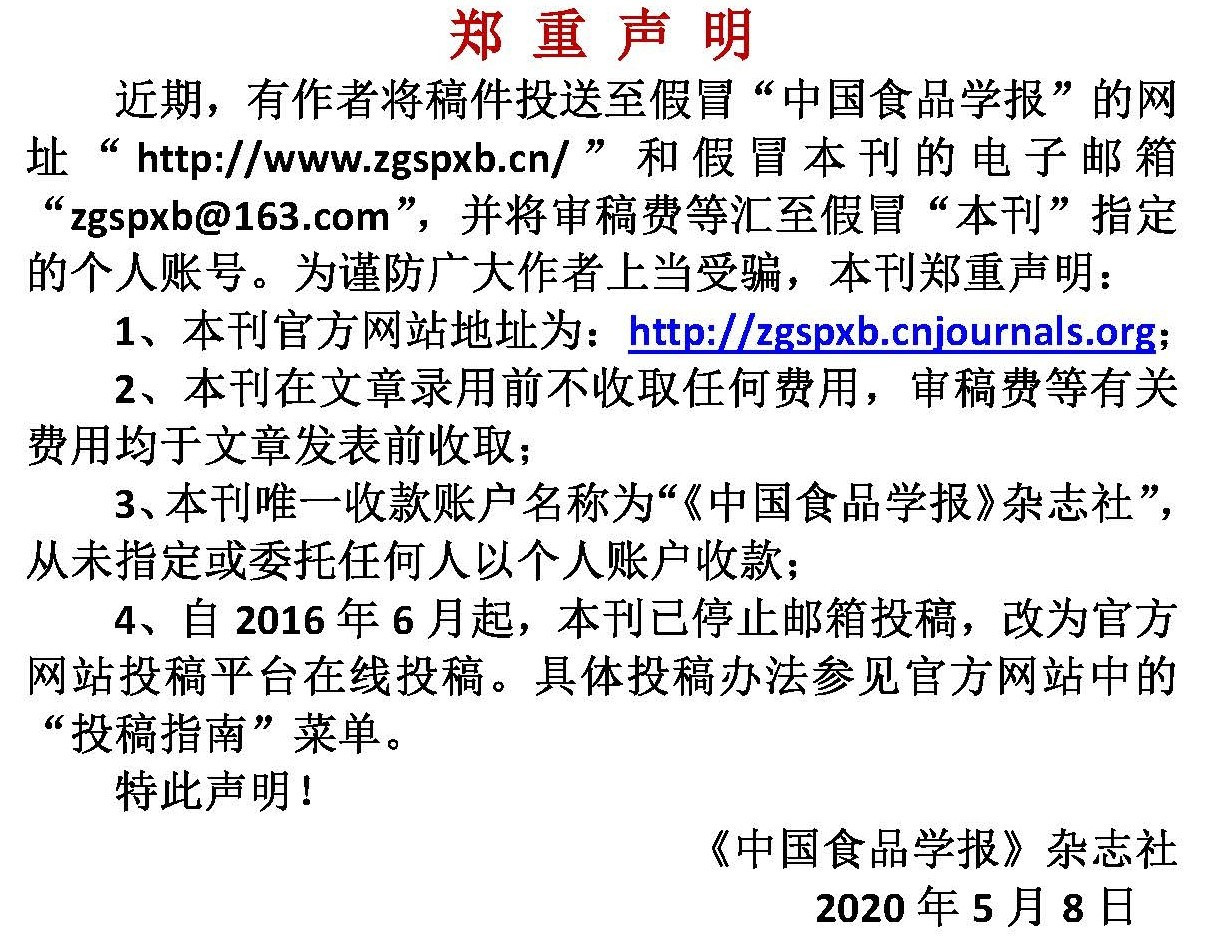茶渣碱提取物中的蛋白质性质分析
作者:
作者单位:
(1.福州大学生物科学与工程学院 福州 350108;2.福建省食品生物技术创新工程技术研究中心 福州 350108;3.福建大昌生物科技实业有限公司 福州 350108)
作者简介:
魏汉(1996—),男,硕士生
通讯作者:
中图分类号:
基金项目:
福建省科技计划引导性项目(2018N0013);国家自然科学基金项目(31701649)
Study on Functional Properties of Alkaline Protein Extract from Tea Residue
Author:
Affiliation:
(1.Institute of Food Science and Technology, College of Food Science and Technology, Fuzhou University, Fuzhou 350108;2.Fujian Food Biotechnology Innovation Engineering Technology Research Center, Fuzhou 350108;3.Fujian Dachang Biotechnology Industry Co., Ltd., Fuzhou 350108)
Fund Project:
引用本文
魏汉,刘派,黄贞胜,张晨.茶渣碱提取物中的蛋白质性质分析[J].中国食品学报,2022,22(9):259-269
复制分享
文章指标
- 点击次数:
- 下载次数:
- HTML阅读次数:
历史
- 收稿日期:2021-09-19
- 最后修改日期:
- 录用日期:
- 在线发布日期: 2022-10-26
- 出版日期:
文章二维码

版权所有 :《中国食品学报》杂志社 京ICP备09084417号-4
地址 :北京市海淀区阜成路北三街8号9层 邮政编码 :100048
电话 :010-65223596 65265375 电子邮箱 :chinaspxb@vip.163.com
技术支持:北京勤云科技发展有限公司
地址 :北京市海淀区阜成路北三街8号9层 邮政编码 :100048
电话 :010-65223596 65265375 电子邮箱 :chinaspxb@vip.163.com
技术支持:北京勤云科技发展有限公司
